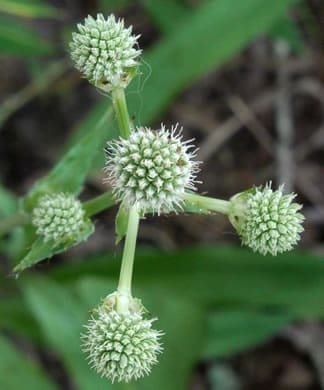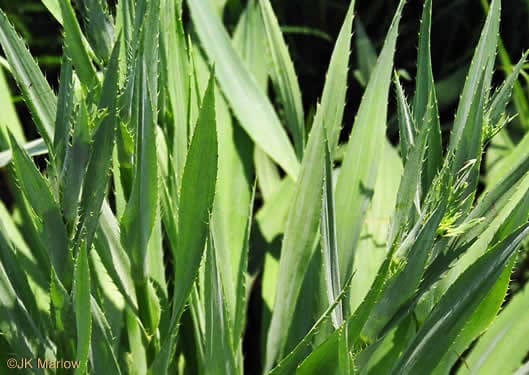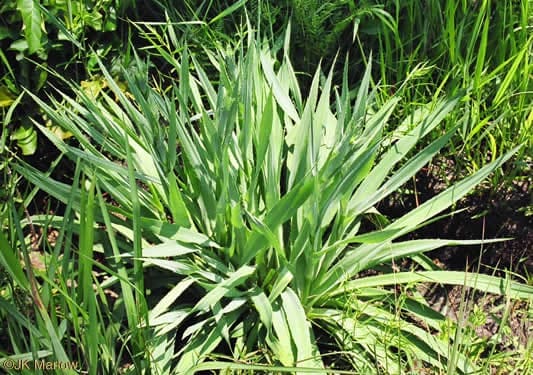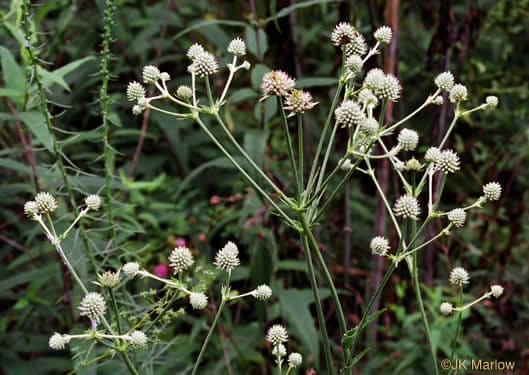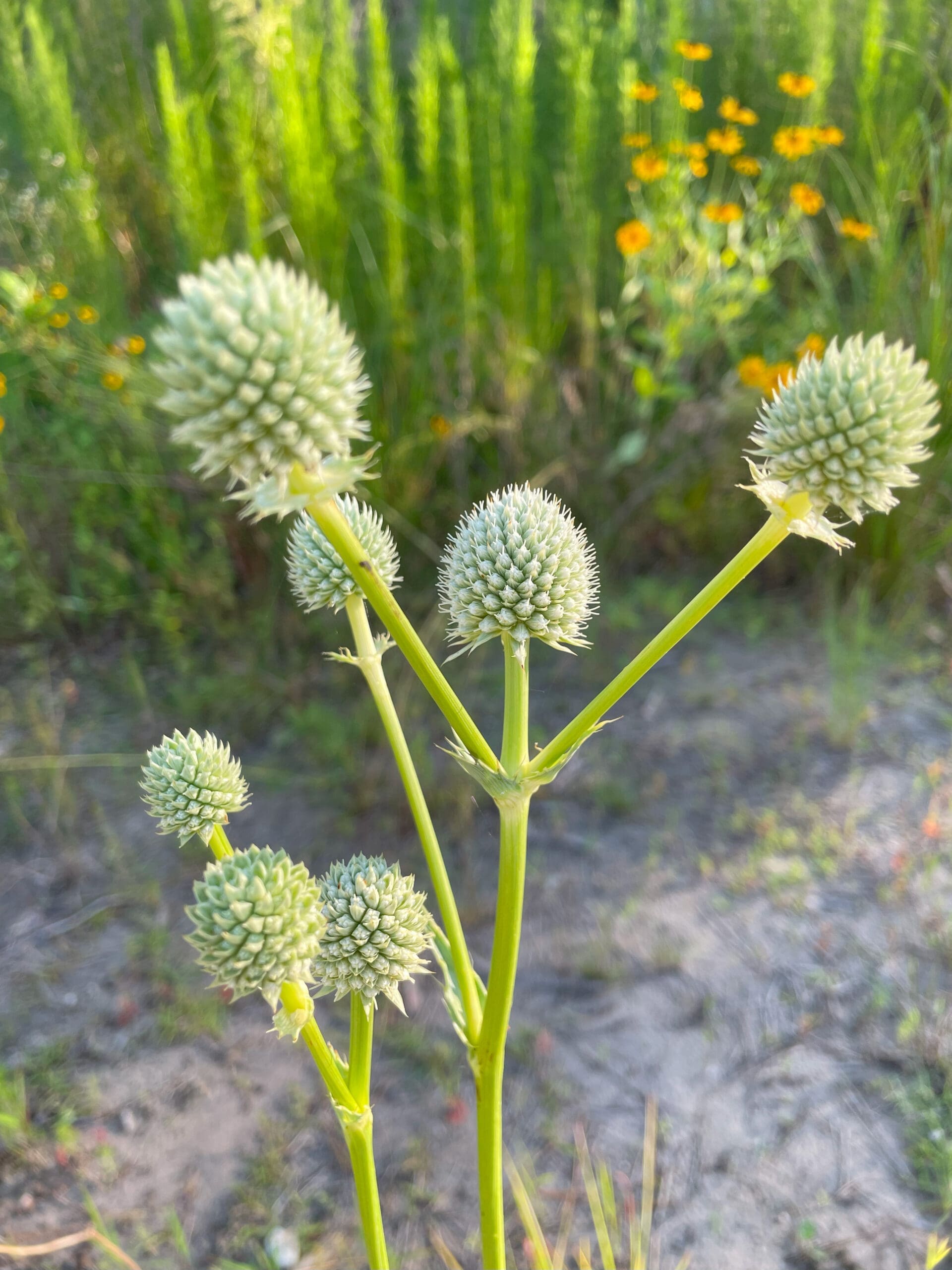Apiaceae
rattlesnake master
Eryngium yuccifolium
Other Common Names
beargrass, button eryngo
Plant Type
Herbaceous Wildflower
Life Cycle
Perennial
Typical Size
4-5 ft. tall
2-3 ft. wide
Tolerant of
Occasional Flooding
Propagation
By seed, By division
Plant Propagation Notes
Seeds require cold-moist stratification for at least 2 months. Mature plants can be divided in spring or early fall.
Plant Planting Notes
Taprooted perennial that does not transplant well. Best left undisturbed once established.
Plants/Diseases
Moles and voles may feed on the crowns in winter. Stems sometimes fall over, especially if not planted in full sun, and will require staking.
Wildlife Benefits
Nectar/pollen source for pollinating insects, Host plant for butterfly larvae
Leaves
The simple, linear leaves are arranged in a basal rosette and are prickly. Leaves are often longer than 6 inches and about 1-3 inches wide.
Flowers
The acorn-shaped flowers are borne in clumps of 8-10. Each flower has five white petals and five white stamens with brown anthers. Fragrant.
Fruit
Quarter inch schizocarp with two seeds per fruit.
Toxicity
No known toxicity.
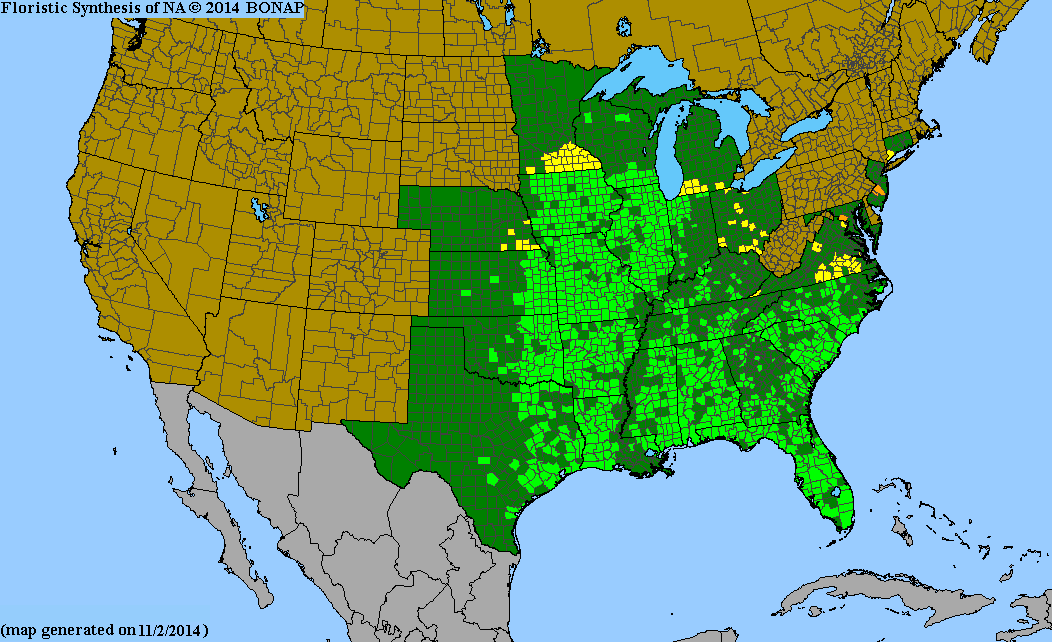
USDA Hardiness Zones
3, 4, 5, 6, 7, 8
Light Exposure
Full Sun
Soil Moisture
Medium, Moist
Soil Drainage
Well-drained
Soil pH
Acidic (less than 6.0), Neutral (6.0-8.0), Basic (greater than 8.0)
Native in South Carolina?
Yes
Plant Native Habitat
diabase barrens and glades, olivine barrens, pine savannas, pine flatwoods over loamy or clay soils, prairies, other open sites with at least periodic moisture, generally in sites showing some prairie affinities.
Global Conservation Status (NatureServe)
Secure (G5)
Federal Conservation Status (USFWS)
Not Listed
Distribution Notes
Uncommon in the South Carolina Coastal Plain, Piedmont, and Mountains
Subspecies
Eryngium yuccifolium var. yuccifolium
Eryngium yuccifolium var. synchaetum

